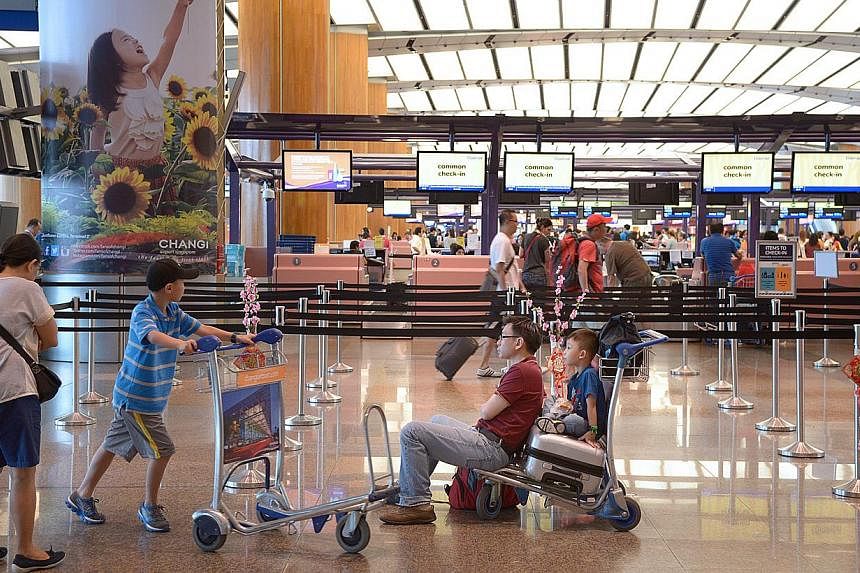Changi Airport's new mega passenger terminal will be bigger and even more ambitious than indicated earlier.
Terminal 5 is likely to comprise a main facility linked to one or more satellite terminals via an underground rail link.
The Straits Times understands that the current plan calls for an initial capacity of up to 50 million passengers a year, but with a provision to increase this to 70 million if needed.
This will make T5, which will be built on reclaimed land currently separated from the existing airport by Changi Coast Road, bigger than T1, T2 and T3 combined.
The details will be unveiled by the Transport Ministry next week.
The mega facility is slated to open in the middle of the next decade. The decision to develop T5 in phases is to ensure it does not end up a white elephant, sources said.
The construction of the new terminal and related infrastructure, including a cargo complex and aircraft maintenance and repair centre, signals Singapore's commitment to grow Changi as a hub for Asian and global travel.
As part of plans for T5, The Straits Times understands there is a proposal to move the Changi Airfreight Centre, which houses Singapore Airlines' (SIA) corporate offices as well as facilities of ground-handling and cargo companies.
The idea is to integrate planning for the cargo complex and airport terminal to ensure smooth movement and processing of air freight.
SIA, which operates out of T2 and T3, has expressed "preliminary interest" in operating from T5, but nothing has been firmed up, said its spokesman Nicholas Ionides.
With rival airports in Hong Kong, South Korea and the Middle East expanding aggressively, Changi must ensure it has the capacity and infrastructure to fight back, or risk losing out, said aviation analysts.
Based on past growth and future projections, Changi, which handled 54.1 million passengers last year, could hit the 100 million mark by 2030, they said.
In 2018, when T4 is completed and T1 expanded, the airport will be able to handle up to 85 million passengers a year.
In planning for T5, there is a need for bold plans but also flexibility, given the current uncertain industry climate, with budget carriers slowing down and plans for Asean open skies still not finalised, analysts said.
"The best way forward is to commit to the basic steps upfront, and then adjust the later details based on better information at different stages in the future," said transport expert Terence Fan of the Singapore Management University.
"Hopefully, the 2025 timeline for T5 is a target of this kind, which itself can be stretched further in the future if the forecast traffic increases do not materialise soon enough."
Mr Paul Yap, who heads Temasek Polytechnic's aviation and aerospace centre, agreed, and said: "At the end of the day, traffic projection is not an exact science."
The development of T5 and related facilities will boost Singapore's overall aerospace sector and provide thousands of jobs during construction and upon completion.
Mr Kent Yar, director of aerospace and engineering at ZW HR Consulting, said the new airport project will "make for a buoyant industry", with good opportunities for job seekers. They can pursue not just engineering and technical jobs, but also those in sales, management and other aspects of the industry, he said.

